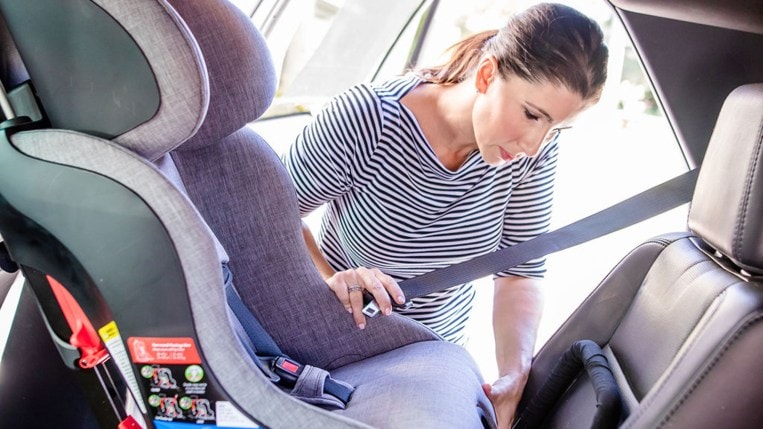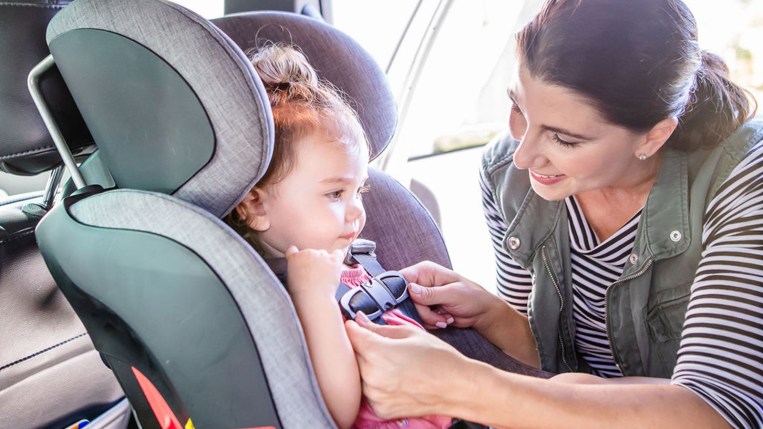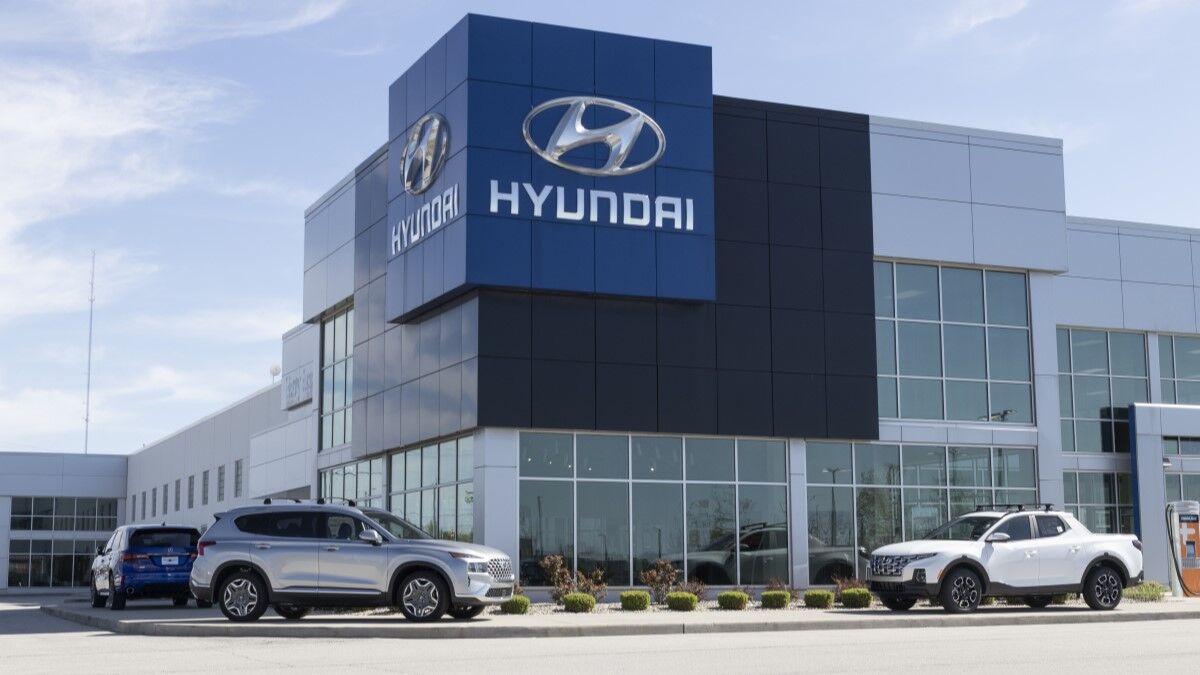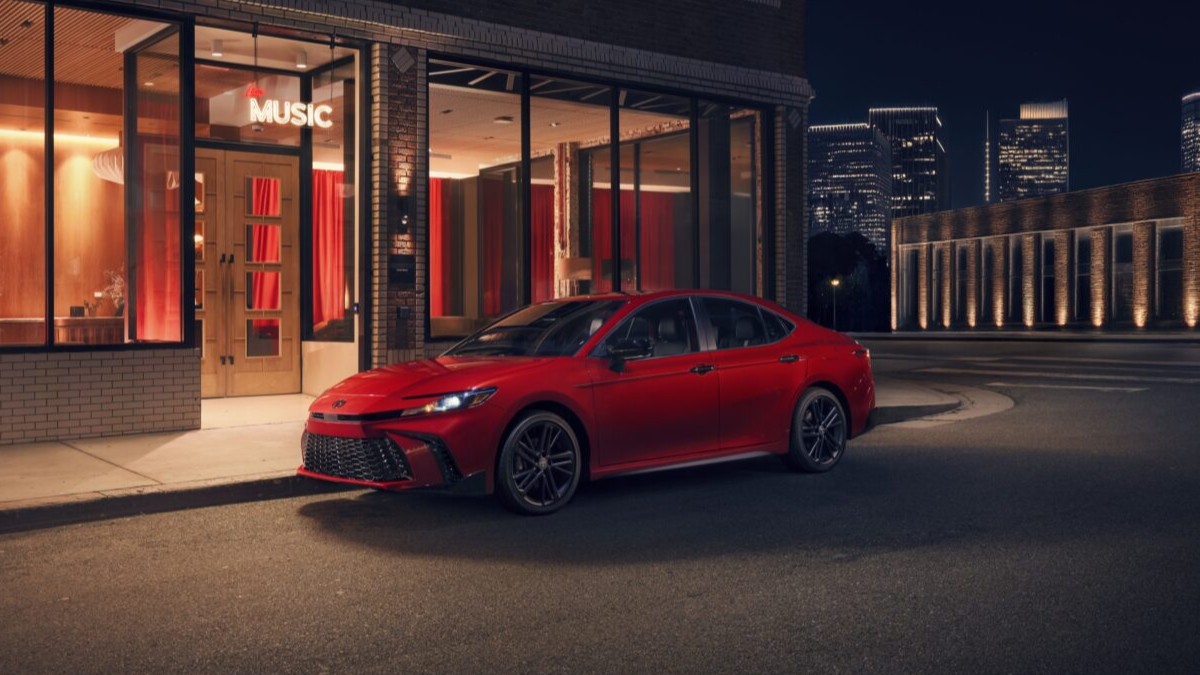There’s no shortage of safe, reliable, feature-rich cars on the market these days, giving parents a plethora of options when it comes time to shop for a new family hauler. Should you go with the practical minivan with USB ports galore and an integrated vacuum for stray Cheerios? Or maybe you’d prefer the sportier midsize SUV with captain’s chairs and endless cupholders for Mommy’s morning caffeine fix. Whichever way you go, one thing is certain – you’ll need to make sure your child’s safety seat works with the car in question before you buy it. So, how exactly do you do that?
As parents, there’s literally nothing more important in this world than keeping our kids safe. And we all know that the use of child safety seats in vehicles is required by law. But for some reason, the thought of installing car seats is just one of those things that makes most moms break into a cold sweat. We spoke to car seat safety expert Michelle Pratt of Safe in the Seat about this, and Michelle’s advice was simple: Get to know your car seat, parents! Sit down with it, read the manual, watch some installation videos and then PRACTICE! Install it and uninstall it as many times as you need to until you’re fully comfortable with how it works. This will make your life a million times easier when you start test driving new vehicles.
How do you know if your existing car seat will work in the car you want to buy?
When shopping for a new family car, our number one piece of advice is to bring your child safety seats with you for the test drive and to install them while you’re there. We know what you’re thinking: This is going to thoroughly annoy the salesperson at the dealership. When we discussed this point with Michelle, she commented that as moms, we tend to spend more time trying on a pair of jeans in a department store dressing room than we do testing our car seats in the car we’re thinking of buying! It sounds silly when you put it that way, doesn’t it?
The reality is that a car is a huge purchase, so parents shouldn’t feel bad for needing extra time to ensure the vehicle they’re considering truly fits their daily lifestyle. Michelle even suggests bringing your children with you when you test drive the car so you can practice lifting your kids in and out. She also recommends asking the salesperson if you can take the car around the corner to a spot with more space and fewer eyes on you as you test your car seats with (potentially whining/crying) kids in tow.
Are there specific features in a vehicle that make for an easier car seat installation?
There are some obvious car features that make it easier for parents to install their child safety seats, including elevated ride height, larger and/or sliding door openings, and increased headroom. However, there are a few features you might not have considered that can present some challenges depending on the type of car seat you’re trying to install.
Shallow/short second- or third-row seats, inflatable seat belts, rigid/inset buckle stalks, and non-removable or forward-tilting headrests can all be compatibility concerns with car seats. Thinking about buying a luxury car? Michelle says that the fancier, more plush seats tend to present the biggest challenges. Bottom line is that the better you know your car seat, the better armed you’ll be when you check out a car in person for the first time.
Is there anything specific to know about the LATCH system as it relates to car shopping?
Most cars these days use the LATCH system (Lower Anchors and Tethers for Children), but some manufacturers incorporate this system better into their vehicles than others. When we spoke with Safe in the Seat’s Michelle Pratt, she mentioned that many parents only look for the lower anchor connector when testing a new car because they have just one child in a rear-facing car seat and have never even needed a top tether. So it’s important to do a bit of a logistical exercise before you start shopping.
Think through how you’ll use the car over time and how many kids in car seats you could have in the vehicle at once. Tether positions are critically important when you have several kids in safety seats simultaneously. Michelle said that it’s “shocking how many ‘family vehicles’ don’t have multiple tether positions in the third row” or sometimes they exist but they’re spaced so closely together that’s it’s impossible to install car seats side by side. These are all important factors that could make or break your car-buying decision – but only if you know to look for them.
Test drive at home
As visions of minivans and midsize SUVs dance through your head, it’s important to realize that the more you plan, prepare, and practice with your existing car seats, the easier the car buying process will be in the end. If the idea of dragging your littles to the local dealership makes you cringe, you can always call and ask the salesperson to bring a specific vehicle to your home for a test drive. Extended and/or at-home test drive requests are often granted with a valid driver’s license if you ask nicely. That way you can park the car in your garage and make sure it fits in the midst of strollers, bikes, and sports equipment.
And if you find that your existing car seat isn’t compatible with the car you’re coveting, you don’t necessarily have to ditch your dream. Michelle says buying a new car seat can often be the lesser of two evils.
Last but not least, if you’re still feeling stressed or confused, consult a certified Child Passenger Safety (CPS) tech. The more information you have upfront, the more empowered you’ll feel during your car buying journey – ensuring both the safety of your children AND the preservation of your sanity at the same time.
Michelle with Safe in the Seat is a mom and nationally certified child passenger safety technician. Her judgement-free approach can help turn car seat confusion into confidence. Michelle has online courses, personalized consults, and daily doses of safety tips and tricks that can empower caregivers to keep their most precious cargo safe in the seat.









